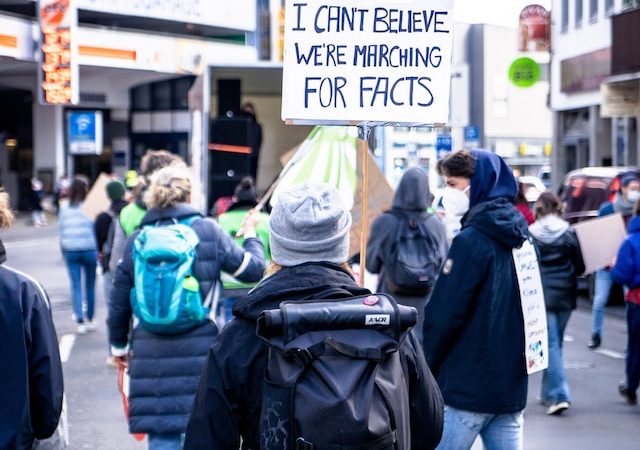In today’s digital age, social media has become an integral part of our lives. It is a platform where we can easily connect with friends and family, share our thoughts and experiences, and stay up-to-date with the latest news and trends. However, along with its numerous benefits comes a major challenge: the spread of false
In today’s digital age, social media has become an integral part of our lives. It is a platform where we can easily connect with friends and family, share our thoughts and experiences, and stay up-to-date with the latest news and trends. However, along with its numerous benefits comes a major challenge: the spread of false information. With just one click of a button, fake news or misleading content can circulate rapidly on social media platforms like wildfire. This poses serious consequences for individuals and society as a whole. In this blog post, we’ll discuss how to fight back against the spread of false information in the age of social media by learning how to spot it and respond effectively when it arises.
The Problem with False Information on Social Media
False information on social media is a major problem that has far-reaching consequences. It feeds into confirmation biases, reinforces stereotypes, and can shape public opinions on important issues. The spread of false information also undermines trust in traditional news sources and the credibility of democratic institutions.
One major issue with false information on social media is that it often goes unchecked. Many people are quick to share sensationalized headlines or stories without verifying their accuracy. This can lead to the rapid dissemination of false information across multiple platforms.
Furthermore, the algorithms used by many social media sites prioritize engagement over accuracy, meaning that misleading or inflammatory posts are more likely to go viral than fact-based content. When this happens, it becomes even harder for true facts to cut through the noise and reach people who need them most.
Another problem with false information is its potential impact on public health and safety. During crises like pandemics or natural disasters, misinformation about treatments or evacuation orders can have catastrophic effects.
In short, fake news and other forms of disinformation have become an increasingly serious threat in our digital age – one that requires careful attention from all individuals who value truth and democracy alike.
How to Spot False Information
In today’s world, false information can spread like wildfire on social media platforms. It is essential to know how to identify such misinformation and not fall prey to it. Here are some tips on how to spot false information:
Firstly, look at the source of the information. Is it a credible website or news outlet? If not, then there is a high chance that the information might be untrue.
Secondly, check for any bias in the content presented. Does the article present a one-sided view without considering other opinions? If so, then it could be misleading and biased.
Thirdly, scrutinize any statistics or facts mentioned in the article. Are they backed up by reliable sources? Or are they simply pulled out of thin air?
Fourthly, take note of any sensationalized headlines or click-bait titles that may draw you into reading an entirely fabricated story.
Cross-check with other sources before accepting anything as true beyond doubt. If multiple reputable sources corroborate a piece of information -you’re probably good; otherwise taking precautionary measures can save unwanted consequences later
By keeping these pointers in mind when browsing through social media feeds and articles online we can avoid being misled by fake news and stay informed with truth!
How to Respond to False Information
Responding to false information on social media can be a tricky task, but it is important to take action in order to prevent the spread of misinformation. Here are some ways you can respond to false information:
First and foremost, do not engage with individuals who spread false information. This only gives them more attention and amplifies their message. Instead, focus on sharing factual information from reputable sources.
If you see false information being shared by someone you know personally, reach out to them privately and provide them with accurate resources that debunk the misinformation they shared. It’s best to approach this conversation calmly and respectfully.
Report any posts or accounts that share false information so that social media platforms can take action against these accounts.
Consider joining online communities focused on fact-checking or combating misinformation. These groups often have resources readily available for responding to falsehoods online.
Remember that staying informed is key when it comes to identifying and combating fake news. Keep up-to-date with current events from trusted sources and always fact check before sharing anything online.
Conclusion
In the age of social media, false information can spread like wildfire, causing damage to individuals and society as a whole. However, by learning how to spot and respond to false information, we can fight back against its spread.
Remember to always fact-check before sharing any information on social media. Look for reputable sources and avoid spreading anything that cannot be verified. If you do come across false information, don’t be afraid to speak out against it and share accurate facts instead.
By working together to combat the spread of false information on social media, we can create a more informed society that values truth over sensationalism. Let’s take responsibility for our online actions and make sure that the content we share is factual and helpful rather than harmful or misleading.

















Leave a Comment
Your email address will not be published. Required fields are marked with *